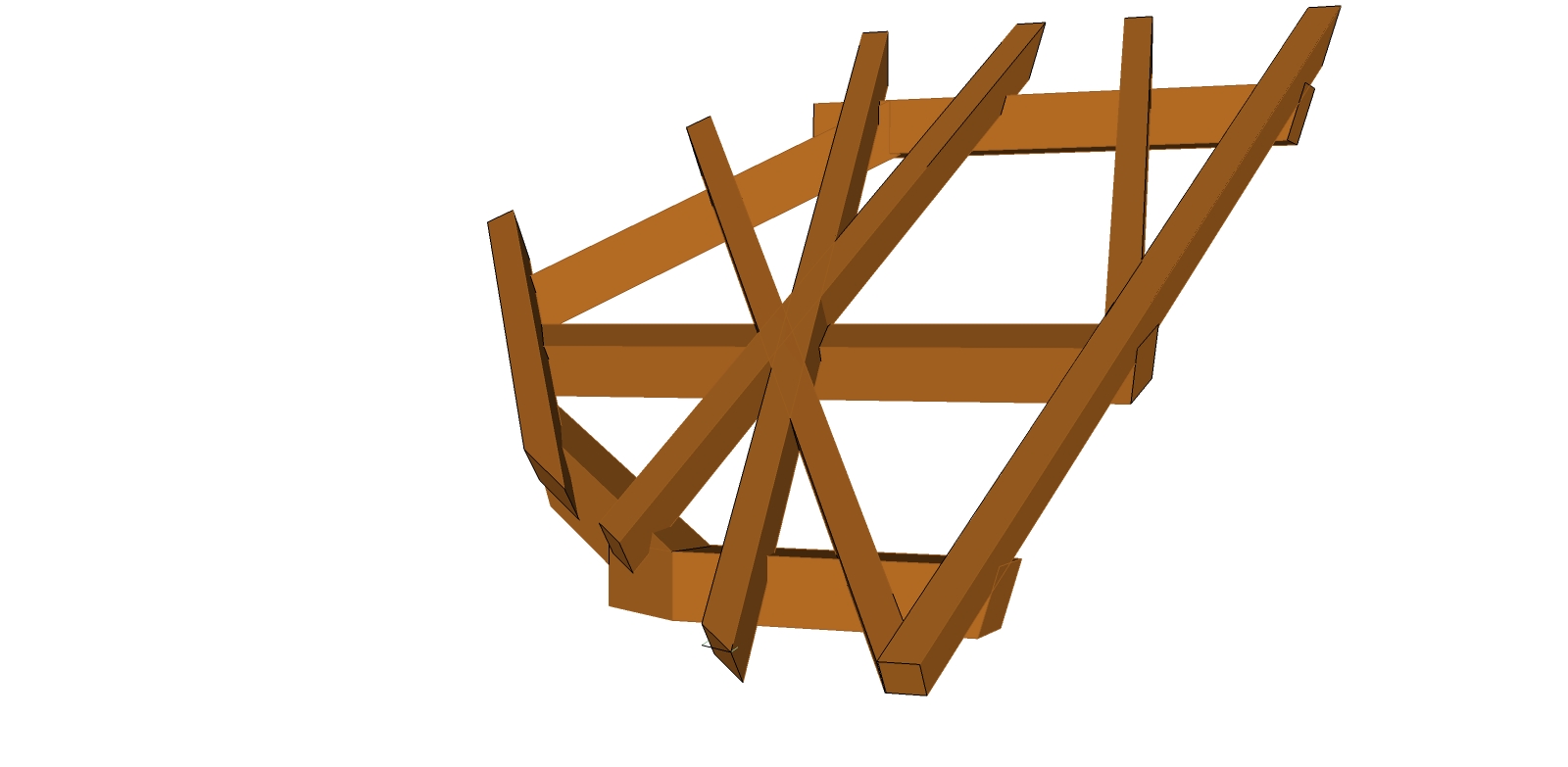Pent Roof with Rising Purlin
Pultdach mit ausgesteller Spitzgaube
Definitely got side tracked going through this task model. I wanted to see how the shadow line technique worked with other drawings that aren't in Bernd Kuppers book on the ancient knowledge of roof framing. One of my other German books on Schiften uses the typical TC, traite carre, method to develop the DP, "devers de pas", line for the canted rafter. Bernd said this shadow line technique was ancient knowledge and not documented in other German Zermmermann books. The German technique for developing the DP-Shadow line of the canted rafter from the other German book I have uses the term Spurlinie, track line. I think the terms shadowline, Schattenlinie, or DP, "devers de pas" are easier to remember and make the drawings easier to reference, then using the term track line. Using Bernd's technique for developing the DP-Shadow Line will save you countless hours of drawing out the DP-Shadow Line . For the carpenters going to the WorldSkills competition it would be foolish not to study the Shadow Line technique where you only have 20 or so hours to draw and build the complex task model.
3D drawing of the task model.
Geometry developing the rising purlins from the shadow lines.
3D drawing showing the canted plane of the canted rafter for the end cut on the rising purlins.
Drawings that I did while I was side tracked studying the shadow line technique. In this drawing there are four different methods for developing the DP-Shadow line.
- TC-- trait carré method.
- Hip Rafter Backing triangle with the Hip Rafter material rotated into the roof surface plane.
- Shadow Line method.
- Fourth method, in red, with no name. This method works on 90° eave angles, which would be the same as the Shadow Line method. It works in this drawing with an eave angle of 70°, but it didn't work on an eave angle of 60°. Needs more development.
Drawing using the Shadow Line technique and plumb jack rafter claw development for the canted hip rafter.
Drawing showing the three different techniques for developing the DP-Shadow Line of the canted hip rafter on an eave angle of 90°.
This is where I really got side tracked. I tried using the witches cut techniques from the book for developing the witches cut on the canted hip rafter and it works correctly for the witches cut for the canted hip rafter.





















No comments:
Post a Comment
Note: Only a member of this blog may post a comment.